
Training
31 min read
Best Practices On How To Retain Factory Workers
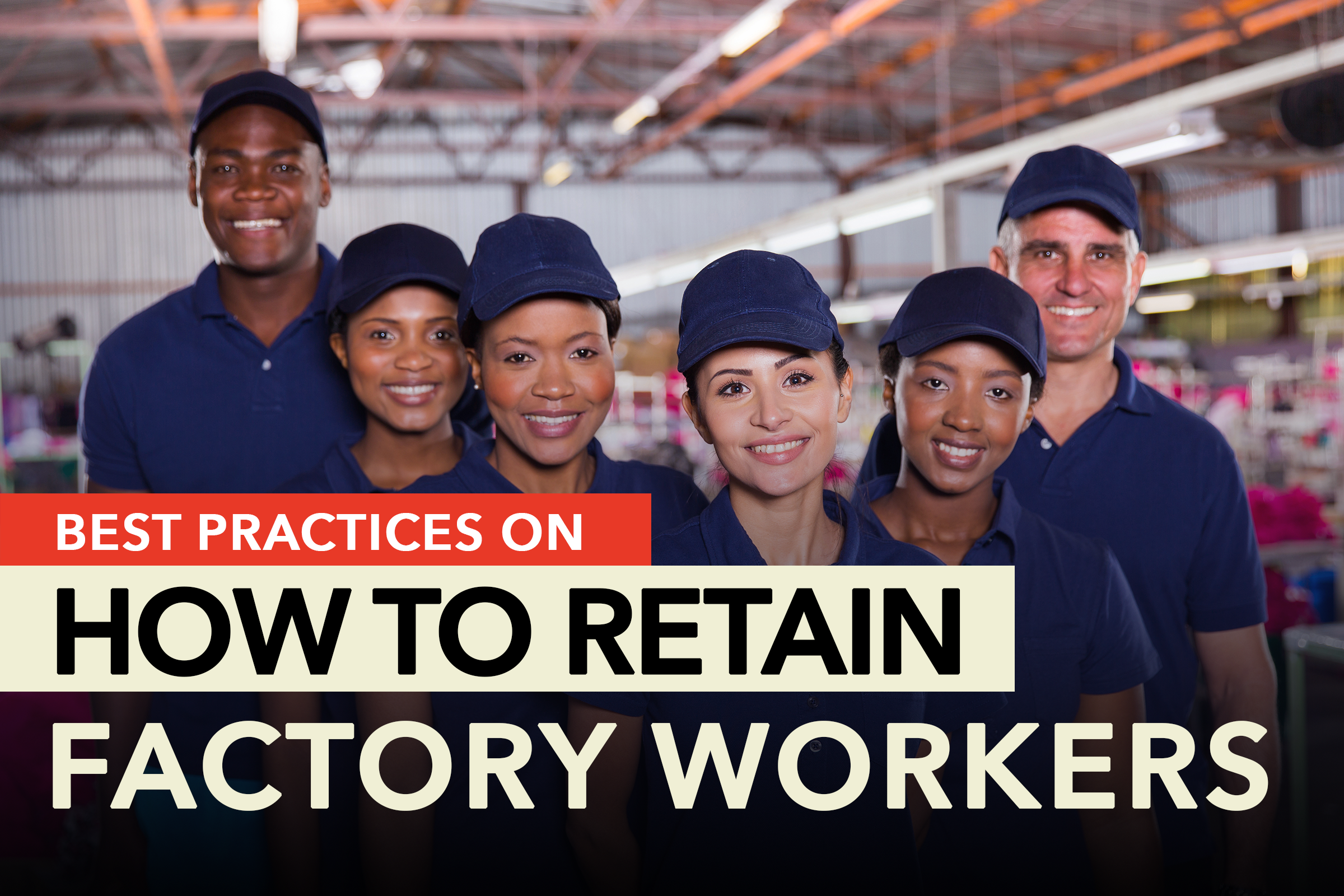
Manufacturing companies rely on workers to be the frontline of production. And while companies across all sectors struggle to recover from a labor crisis perpetuated in part by the Covid-19 pandemic, the manufacturing industry faces a unique crisis. Even before the pandemic, studies showed that over 8 million manufacturing jobs would be vacant by 2030.
A shortage of skilled labor coupled with an aging workforce and a younger generation leaning more toward tech-friendly, remote jobs helped to build a labor shortage. And then the pandemic wreaked havoc across the industry, with shutdowns and supply chain disruptions keeping manufacturing companies teetering on the edge of disaster.
So how do manufacturing companies strategize solutions that will keep staffing levels at a secure level? The best way that companies can achieve this is by focusing on improving employee retention rates.
And here’s why:
Companies spend an average of $1,075 and 33 hours training new employees. When upwards of 20% of those new employees quit within the first 90 days at a new job, all the money and resources spent in the process are wasted.
When a turnover rate is elevated, companies stand to lose those resources repeatedly.
In this article, we will discuss the benefits of an increased retention rate and discuss proactive solutions that manufacturing companies can take to decrease turnover.
What Are the Benefits of Retaining Factory Workers?
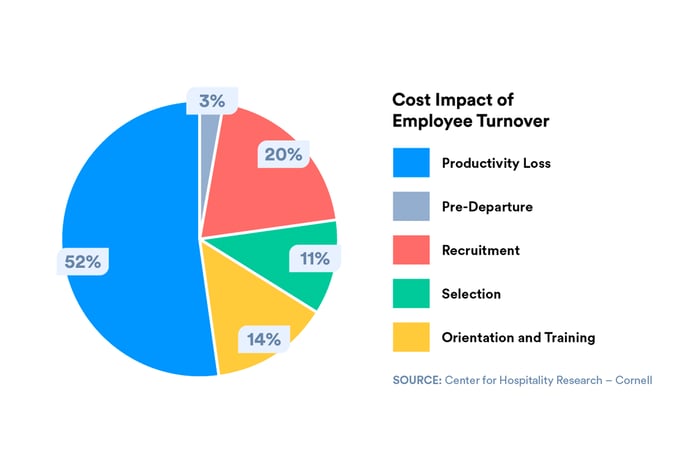
When it comes to practices that can directly affect a company's bottom line, having a focus on increasing employee retention rates is one of the most beneficial and most overlooked.
A decreased turnover rate directly affects productivity and revenue. And having tenured employees develops a dedicated team of experts who are familiar with the company's products and processes.
Benefits of a high retention rate:
Saves Time and Money on Sourcing, Hiring, and Training New Employees
Consider the number of resources companies spend to fill open positions. There's the cost of sourcing potential new hires, analyzing resumes, scheduling and conducting interviews, completing onboarding processes, and time spent training new team members.
Increased Productivity
It takes new team members an average of 12 months to reach the same level of productivity as the employees they are replacing. That’s because it takes time to learn and execute processes properly. New team members won’t be as productive as workers who already know how to perform their job well and can do so without constant supervision and oversight.
Fewer Accidents and Mistakes
Experienced team members are less likely to make critical mistakes that can cost a company money. And they’re less likely to disregard or misunderstand safety protocols and procedures, leading to a decrease in accidents that can cause injury or harm to workers.
Improved Employee Morale
Having a high retention rate allows employees the opportunity to build meaningful relationships with their coworkers, which benefits both the team members and the company. When employees are happy where they’re at, they are less likely to look elsewhere.
Improved Customer Satisfaction
When a company has happy, engaged team members the benefits pass directly to the customer. Engaged and experienced team members can more easily detect and react to problems that would affect the customer. And when employees are secure and confident in their roles, they are more likely to act with the success of the company in mind.
Increase Revenue
High turnover rates cost companies money. On average, it costs a company approximately 16-20% of an employee's salary to replace them. And for high-level executives, that percentage is an astronomical 213%. It makes good financial sense to focus on how to retain factory workers rather than constantly paying to replace them.
Build a Team of Experts and Advocates
Employees who stay with a company for a long time become experts in their roles. This allows them to be more productive, more efficient, and better able to train new employees. And employees who are happy in their job roles are much more likely to refer people to open positions.
Since employee referrals are one of the best and most cost-effective ways to source potential new hires, creating a strong, loyal workforce is key to keeping staff levels where they need to be.
How to Determine a High Employee Turnover Rate
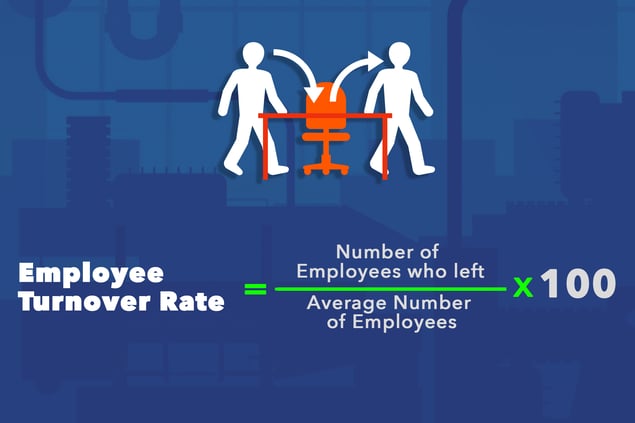
Turnover rate describes the number or percentage of employees who leave a company on average. Determining the exact turnover rate of a company is the first step in figuring out how to retain factory workers. Figuring out this percentage can be accomplished with a simple equation.
Turnover Rate = # of Separations / Average # of Employees X 100
So, to find an average turnover rate for a company, simply divide the number of separations by the average number of employees. Then multiply the sum by 100 to get a percentage. That percentage represents the average turnover rate of a company.
If that percentage is more than 28% in the first 90 days of employment, it can be a red flag. When you consider that 34% of new hires who quit say they did so because of a bad experience it becomes even more apparent that company policies and actions (or inactions) are directly to blame for the largest percentage of turnover.
So, what's to be done about it? Companies that have a high turnover rate should implement strategies that focus on how to retain factory workers as soon as possible. Doing so will only benefit everyone at every level within the organization.
Indicators of a high employee turnover rate:
Unhappy and Disengaged Employees
Considering that one of the biggest reasons employees leave a position is directly related to their happiness in the workplace, companies need to pay close attention to morale on a day-to-day basis. Gather feedback from employees, both tenured and new hires, to get a feeling of where company culture is lacking.
Lowered Production Rates
A lowered production rate can be a direct result of a high turnover rate, so if production is suffering companies should take a closer look to see why. A revolving door of newly hired workers will cause slumps in production because new employees take time to train and even more time to become proficient in their job roles.
Understaffing
While hiring is probably a non-stop activity for most companies, if staffing levels are suffering and a company finds itself consistently short-staffed, high turnover could be to blame. Assess whether the number of resignations is what’s causing the shortfall.
Perform exit interviews whenever possible to gauge employees' feelings and reasons why they've decided to look elsewhere. This will give companies a good idea of where improvements can be made to increase retention rates.
Toxic Work Environment
A major cause for unhappy and disengaged workers is the work environment itself. Companies should utilize managers and HR executives to measure whether policies are in place that builds a positive, supportive environment.
If you find that a good number of employees cringe at the thought of showing up to work every day, it’s time to reevaluate and take steps to improve the culture and environment for workers.
Complaints About Management and Supervisors
Companies should evaluate their managers and supervisors to ensure that they are working to create a positive balance between demonstrating authority and offering the kind of support that workers crave.
Nobody likes a bad boss, so making sure that those people who have a direct supervisory role over employees have the tools and training to be successful couldn’t be more important.
Why Do Manufacturing Employees Quit?
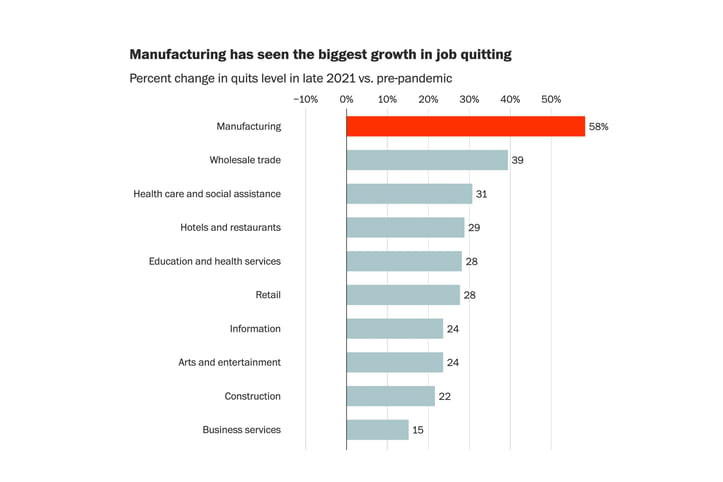 The Covid-19 pandemic has contributed greatly to a surge in the number of people resigning from positions. Reports say that the manufacturing industry has suffered the greatest increase in the number of resignations, with a 60 percent increase compared to the period before the pandemic.
The Covid-19 pandemic has contributed greatly to a surge in the number of people resigning from positions. Reports say that the manufacturing industry has suffered the greatest increase in the number of resignations, with a 60 percent increase compared to the period before the pandemic.
So now more than ever, manufacturing companies need to understand how to retain factory workers, and what is driving them to quit in the first place.
The majority of employee turnover happens intentionally, meaning employees voluntarily resign from their positions to seek other employment. There are numerous reasons for this, including the desire for higher pay, better benefits, and poor leadership.
Understanding what is driving employees away from a company is the first step to figuring out how to improve those processes that are the cause. And while you will never prevent every resignation, there are many proactive solutions companies can undertake to better learn how to retain factory workers.
Reasons Why Employees Quit:
Higher Pay
Most of the decisions made by employees regarding whether to stay at a job or look elsewhere are related to salary. Workers are more than willing to jump companies if a position is available where they can make substantially more money performing similar work.
Companies that make use of temporary workers instead of hiring permanent, unionized workers are at a higher risk of increased turnover related to salary. Temporary workers receive an average compensation 4 percent lower than permanent workers.
Offering team members annual raises provides some incentive to stay aboard. And ensuring that salaries are competitive and match the average market value for similar positions can help persuade employees that they can succeed and thrive within their organization.
Companies can also bolster wages by offering employees secondary compensation in the form of perks like gift cards, company swag, and discounts on services like cell phones and hotel stays.
Better Benefits
Secondary only to wages, benefits are one of the biggest draws for employees. Health insurance and retirement options especially are a must-have for many job seekers in today’s market.
And while covering the cost of employee benefits is an upfront expenditure that can have a big-ticket price, consider the fact that the money would be spent replacing those workers when they resign anyhow.
Better Work/Life Balance
Employees today are looking for the kind of employment that offers them the security of a good wage and great benefits paired with the opportunity to lead a fulfilling life during their downtime.
Offering employees paid sick time and robust vacation packages is a big draw for job seekers. Not only will it encourage them to stick with an organization, but it will improve the overall morale and well-being of a workforce.
Miscommunication of Job Expectations
One of the biggest reasons new hires give for resigning from a company was not understanding the requirements of the position before coming on board. An average of 43% of new hires who resigned within the first 90 days report that the job wasn't what they expected it would be.
Ensuring clear communication during the pre-onboarding period can ensure that workers don't show up on their first day expecting something different from what they get. Being upfront, honest, and clear about the requirements and skills needed for a position and the activities of the job are key to ensuring that the right person is assigned to the role.
Poor Leadership
Another leading reason for the swift resignation of new hires comes from their interaction with management. Approximately 50% of employees report the reason they quit their jobs was because of a clash with the boss.
Ensuring that managers and supervisors are properly trained to perform their jobs successfully trickles directly down to the frontline workforce. Learning how to be a motivating manager instead of the kind of boss employees run from can help keep workers happy and engaged.
Lack of Opportunity for Growth and Development
The job market is rapidly changing and new job seekers demand more from their employers, especially with opportunities for growth and development. Studies show that only 20% of people would recommend their company's training and development programs.
Job seekers place these things very high on their list of wants when looking for a new job. New hires must be shown the possibility of career development within the organization right out of the gate.
Solutions to Prevent Factory Workers from Quitting
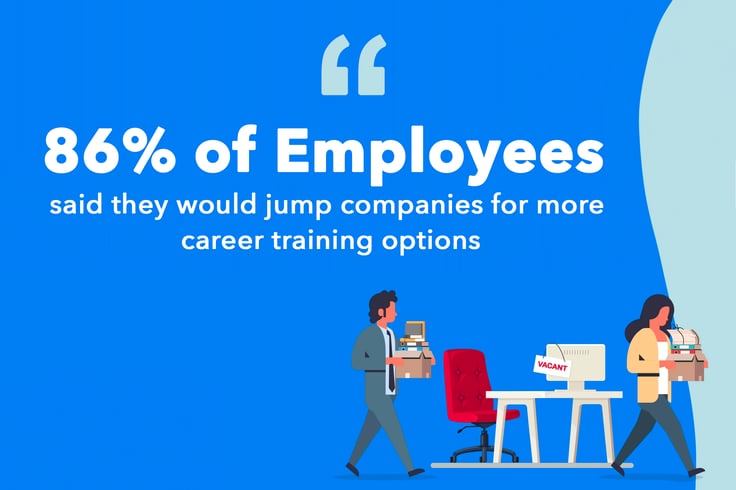 So now that we’ve explained what a high turnover rate is, why it happens, and the benefits of working to lower the percentage, what are some solutions companies can implement today to turn the tide?
So now that we’ve explained what a high turnover rate is, why it happens, and the benefits of working to lower the percentage, what are some solutions companies can implement today to turn the tide?
Aside from offering a higher salary and better benefits, there are other steps that manufacturing companies can take to figure out how to retain factory workers. Recognizing the reasons why employees are leaving is the first step, and then creating solutions for each of those reasons is the second.
Advocate For Their Success
Employers should support the personal growth and success of employees' careers by providing training and development opportunities. According to recent studies, an outstanding 86% of employees said they would jump companies for more career training options. That number cannot be ignored when it comes to finding solutions for how to maintain factory workers.
Offering a mixture of targeted training and development programs can make employees feel that their career is more than just a dead-end job. Consider implementing some of these programs to increase retention rates:
- Managerial and Leadership Training
- Certifications
- Technical Skills Training
- Soft-Skills Training
- Degree Programs
Give Credit Where Credit Is Due
Showing appreciation for a job well done is essential. Studies show that 37% of employees value recognition as an important part of their work experience. When workers don’t feel valued or don’t receive frequent recognition for their accomplishments, they’re less engaged and more willing to look elsewhere for employment.
Regular performance reviews are a great opportunity for managers to recognize the success of workers on a personal level. Pinpointing where improvements can be made alongside praise for a job well done is the best way to improve morale and motivate employees to want to be even better.
Rewarding employees with a simple thank you or job well done can go a long way. Use feedback from team members to gauge what kind of recognition would mean the most to them, whether it’s publicly recognizing them in front of coworkers or rewarding them with additional compensation in the form of restaurant vouchers or gift cards.
Be Encouragingly Realistic
Set realistic goals and expectations. When workers feel like they’re being asked to do the impossible, they’re more likely to become frustrated and look for other opportunities. Pushing employees to do better and be better is different from penalizing them for not living up to impossible expectations.
When productivity is lacking, try to engage one-on-one with employees and management to figure out where the disconnect is. Was there improper or incomplete training that led to a misunderstanding of job skills? Or is the ask of the company unrealistic?
Employees should be encouraged toward improvement without being made to feel like they’re a failure. Companies should strive for the success of every team member, and employees need to feel like they have access to the tools to achieve that success.
Why a Good Onboarding Process is Crucial
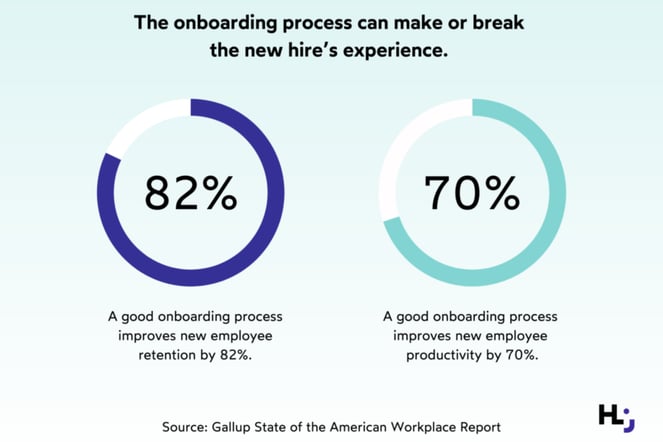
Lowering turnover rates starts from day one, or more correctly before day one. A well-designed onboarding program can make a difference for new hires and will have a large effect on their desire to keep working with a company or run for the hills.
Furthermore, a proper onboarding process helps manage the expectations of new employees and provides them with the proper resources they need to be successful in their roles.
While it may seem like a small step in the overall pyramid of worker satisfaction, the onboarding process can make or break a new hire's experience with a company. Research shows that only 12% of employees report being happy with their onboarding experience. However, 91% of employees are retained during the first year when provided with a solid, clear program for success.
These figures clearly point to the importance of a well-structured onboarding program when it comes to determining how to retain factory workers. But what does a good onboarding experience look like? We’ve broken it down into an easy-to-understand process that will help employees succeed and help companies improve retention rates in the process.
- Onboarding should start before day one and should last at least through the employee's first whole year of employment.
- Utilize technology to get new-hire paperwork out of the way before the first day of work.
- Use checklists to streamline required tasks. Eliminate any tasks that are unnecessary, redundant, or best left to training sessions.
- Share employee handbooks, welcome letters, background about the company, and the culture of the workplace. All of this can be easily accessed with a virtual dashboard, allowing employees to browse information at their leisure.
- A personal phone call from HR or a hiring manager before the first day of work makes a great first impression. The personal touch of an actual person reaching out to answer questions and fill in missing information gaps can help employees feel more confident and comfortable on their first day of work.
- The first day should include all the information the new hire needs to successfully navigate the training process. Ensure workers understand their job roles and responsibilities without any misunderstanding right out of the gate.
- Ensure employees are given time to create relationships with coworkers along the way, whether it's within the training classroom or on the plant floor. Making sure workers immediately feel like a part of the team is imperative.
- Focus on training and development throughout the first year. Use frequent performance evaluations to pinpoint where skills or knowledge are lacking, course correct, and then follow up again.
- Be sure to ask new hires about their experiences and listen to their responses.
Understand What Motivates Factory Workers
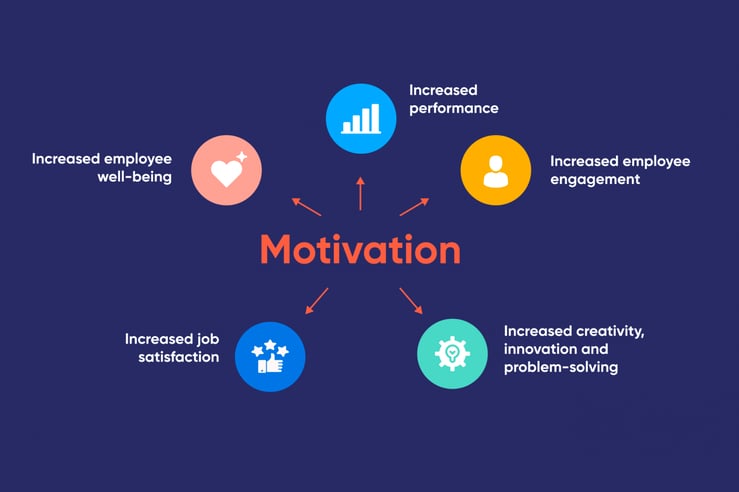
So, what makes an employee want to stay with an organization? Compensation, benefits, training, development, and a positive work environment are all important factors to consider. But beyond that, how do companies sweeten the pot and incentivize their workers to stick around long-term?
It’s essential to remember that not all employees respond to the same incentives. Some may be more motivated by the opportunity to socialize with colleagues, while others may appreciate additional training and development opportunities.
Here are some ways a manufacturing company can incentivize their employees and retain factory workers in the process:
Individual Incentives
Individual incentives are a great way to motivate manufacturing employees. Providing additional paid time off, financial bonuses, or access to exclusive perks can all help to boost employee morale and encourage them to work harder.
Social Interactions
Providing even simple opportunities for social interactions during the workday can go a long way toward making employees feel like they are part of a team of real people. Manager-to-employee interactions are extremely important and offer a great chance to offer some recognition along the way.
Group outings, charity events, and team-building exercises can create the kind of long-term relationships with coworkers that keep employees with an organization longer.
Employee Feedback
There is no greater gift than being heard. Workers thrive when they feel their organization cares about their thoughts and ideas. Offer ways for employees to provide feedback and suggestions.
One-on-one conversations are a great way to boost employee morale, but some employees may be more apt to share feedback if it’s anonymous or shared privately.
Gainsharing
Gainsharing incentivizes employees to work harder and rewards them by offering them compensation to do so. Providing bonuses based on departmental production gains not only bolsters teamwork but makes workers feel like their hard work is worth something.
Keep it Interesting
Going to work and doing the same repetitive task over and over again can wear out even the most loyal employee. Provide workers with opportunities to learn different job roles and skills to prevent burnout. Even a simple change of scenery can reinvigorate workers.
Provide Training Opportunities
A great incentive to keep employees with an organization is allowing them to feel they have a future beyond their current job role. Allowing workers access to additional training and development opportunities is imperative to creating the kind of supportive culture that keeps employees with a company for the long run.
Create a Positive Work Environment
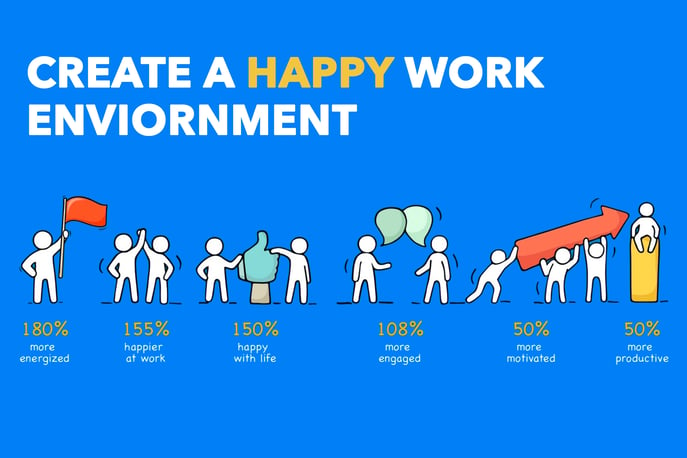
There’s a lot of talk within the corporate culture about creating a positive work environment. And for good reason. Employees consider their work environment to be one of the deciding factors when it comes to accepting a job offer or remaining with a company.
But what exactly is a positive work environment, and how can manufacturing companies create one when strategizing how to retain factory workers? Here are a few tips on what makes a work environment positive in the eyes of employees.
Focus on Safety
Employees want and deserve a safe working environment. A company that fails to focus on safety protocols and puts workers in harm's way in the process is a sure way to drive long-term employees away. Nothing will drive factory workers away faster than an unsafe workspace.
Maintain Health and Cleanliness Standards
This is especially important post-pandemic. Companies that don’t invest in ways to keep employees healthy and safe in their working environment will suffer from high turnover and low morale. Workers want to feel valued, and nothing says value more than a company that strives to keep them healthy.
Promote Communication and Collaboration
Maintaining transparency and an open line of communication is key to creating a positive work environment. When employees feel like they work for an organization that isn’t hiding information from them, they’re better able to relax into their roles and focus on performance. Build trust with workers by sharing company initiatives, successes, and struggles on a global level.
Listen To Employee Concerns
Companies that actively seek to better the lives of their employees, both inside and outside of the workplace, will better be able to retain those employees. Listening to employee feedback to discover what their concerns are, and then acting on strategies that can help alleviate them will build trust.
Meet Workers' Needs
Whether it's a request for healthier options in the breakroom, better lighting on the plant floor, or even an increase in benefits for childcare subsidies, companies would do well to listen to what employees are saying they're missing.
Have an Open Door Policy
When workers feel like they can voice their concerns without recourse, everyone wins. Employees will feel more valued and better supported in their workplace. And managers and supervisors can benefit from gaining direct feedback from employees regarding issues and incidents that could lead to their early departure if not handled correctly.
Avoid Nepotism or Favoritism
Ensuring the employees are treated equally and fairly will help to build an environment where workers are on the same team and not working against each other. Every employee should be given the same opportunities and regard across all spectrums, including opportunities for advancement and promotion.
How Software Can Improve Turnover
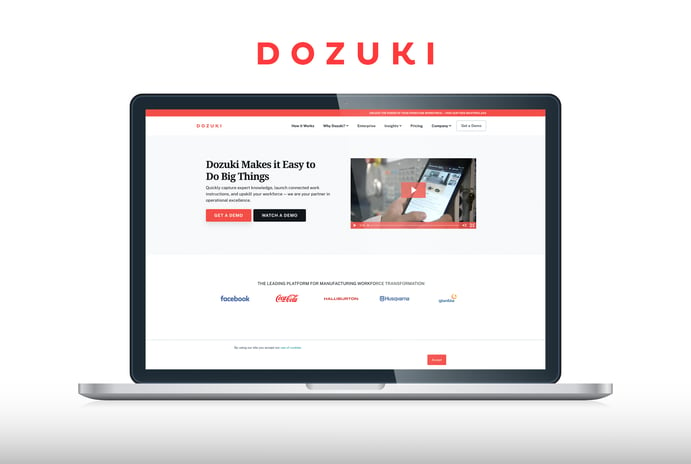
It’s clear that improving retention rates and implementing solutions for how to retain factory workers should be a top priority for companies. One of the best ways for manufacturing companies to increase their retention rates is to take advantage of new technologies.
Implementing a software program that streamlines processes across departments can lower turnover rates for many reasons. A company that utilizes the best technology available to make workers' lives easier and build greater success for an organization overall will better be able to retain workers.
Dozuki is an excellent example of a software platform that helps organizations implement and manage continuous improvement programs. Dozuki allows companies to track their progress and utilize real-time data to identify areas for improvement. And it provides numerous, centralized tools that companies can use that will improve their retention rates.
How Dozuki Helps Companies Retain Factory Workers:
Better Training
Dozuki helps organizations streamline their training processes, giving employees the tools they need to succeed. It provides new hires with a centralized, digital database of work instructions that provide step-by-step instructions using instantly embedded media.
Creating training modules based on documented procedures is easy and intuitive, and allows companies to utilize standardized instructions across teams, shifts, and locations.
Better Organization
Digitizing knowledge allows manufacturing companies to build training programs that rely on up-to-date documentation, rather than outdated and archaic paper instructions. This allows new hires to focus on building the skills they need with confidence that they’re using the latest technology and information available.
Dozuki allows provides the opportunity for companies to capture the tribal knowledge of their more experienced workers. The software allows authorized users to automatically publish updates and share their expertise instantly with incoming workers.
Better Management of Processes
With real-time data that allows for instantaneous analysis of performance, managers and supervisors can get a clearer picture of where knowledge or skill gaps exist. This allows for quicker and easier identification of where new employees need to focus learning initiatives to be more productive and efficient faster.
Better Communication
Dozuki allows instant communication between team members, departments, and managers. Fostering communication and cooperation within the workforce can build a positive work environment where workers feel free to share information and issues can be dealt with quickly.
Final Thoughts On How To Retain Factory Workers
Identifying and understanding the reasons why employees leave an organization is crucial to building better strategies aimed at increasing retention rates. When companies understand how to retain factory workers through creating processes that seek to build positive relationships with their workforce, they stand to benefit in every way.
Workers leave one company for another for many reasons, including higher wages and better benefits. But that's just the tip of the iceberg. A lack of training and development opportunities, bad leadership, and toxic and unsafe work environments can all send new employees rushing for the door.
Manufacturing companies can increase retention rates by building a positive work environment that is supportive of employee needs and creating a company culture that is responsive to workers' concerns. When employees feel valued and supported, they're more than willing to stick around.
The manufacturing industry is an ever-changing entity, and strategies for improving retention should change with it. Implementing new and improved technologies can help give new workers confidence that their organization is striving to succeed and using all the tools and resources available to do so.
When employees and organizations work together toward a common goal, both succeed in the long term. And that's the kind of environment that manufacturing companies need to create to build long lasting relationships with their employees.
Topic(s):
Training
Related Posts
View All PostsEffective Ways To Reduce Employee Training Costs In Manufacturing
29 min read
If you have a business that includes the use of employees, one of the first and most important tasks you must fund is training. This is true of all industries, but companies...
Continue Reading
Work Instructions
Visual Instructions for Better Communication
6 min read
A technician is asked to write instructions for his company’s most frequently performed processes. Pulling out his laptop, he starts to document a procedure as he does it. He...
Continue Reading
Featured
The Ultimate Connected Worker Guide: Why, What, How, Who
15 min read
Industrial leaders are no strangers to change. New machinery, new regulations, new competitors, these are constants But the last decade has brought a different kind of shift:
Continue Reading


